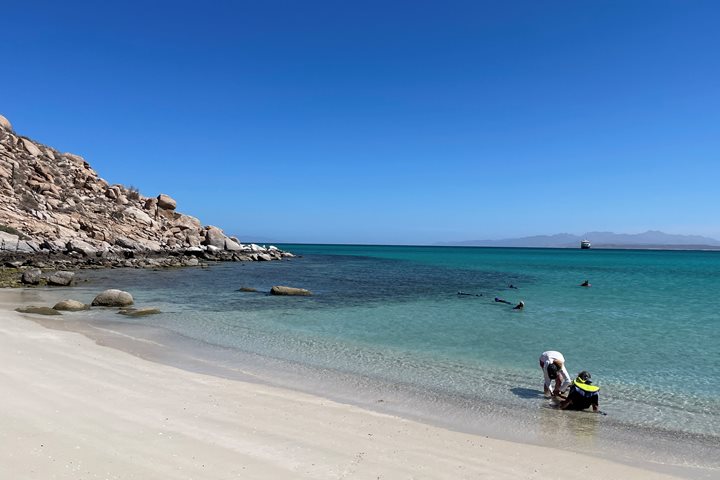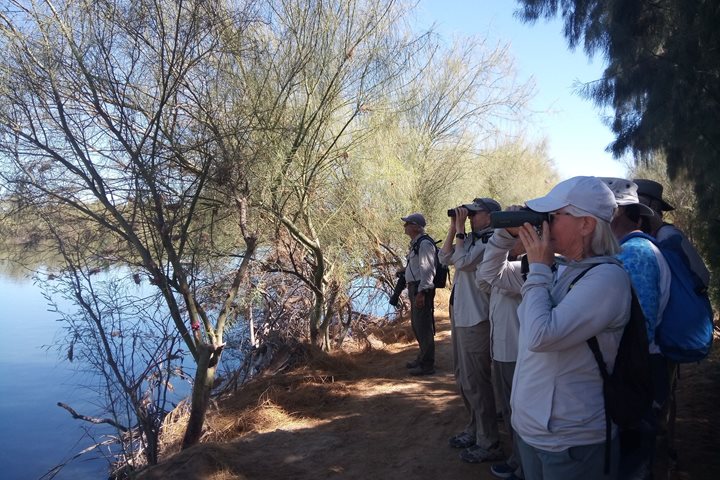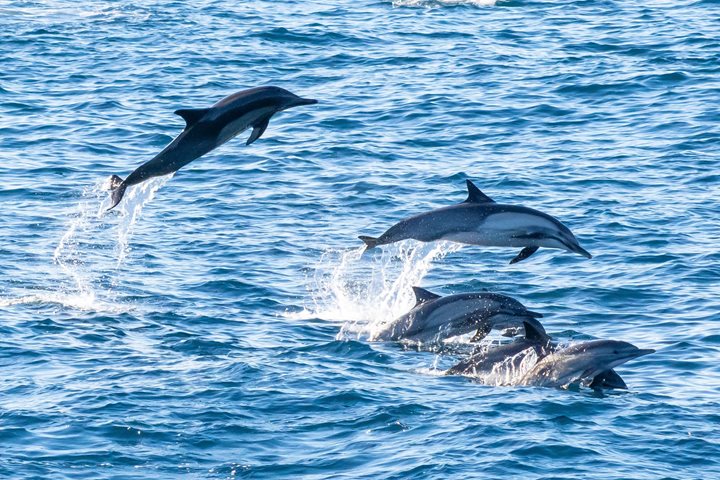Our day today started in a grand way; after having sailed north all night long, the first lights of the morning found us sailing the waters south of San Marcos Island. Our mornings at sea are usually pretty interesting, but today it was something special. We saw a lot of different kinds of creatures, some flying around, some swimming or jumping, and a few just cruising slowly just under the surface, including birds, mammals, and fishes.
Numerous Craveri’s murrelets, the most tropical members of the puffin family, were seen all around, the same as many species of storm petrels, shearwaters, boobies, and gulls. A really big group of bottlenose dolphins, scattered in all directions, entertained us with great acrobatics and bow-riding. Sea turtles, three marlin, one sailfish, and two thresher sharks, including one that jumped high above the water, completed the pre-breakfast sightings! After a quick breakfast, we went back to deck to watch more creatures, including long-beaked common dolphins and had an interesting observation of a floating dead pilot whale.
Once in San Marcos Island we enjoyed several types of hikes into the dry rocky canyon, including aerobic, natural history, and photo-oriented. We also explored the interesting coastline using our expedition landing craft and had the chance to watch closely the local sea lion colony and numerous brown pelicans, ospreys, brown and blue-footed boobies.
During lunch we sailed towards Santa Rosalia, which is the northernmost town in the eastern shoreline of the state of Baja California Sur. Santa Rosalia was created as a company town by the French mining company of “El Boleo” in 1888 and is full of interesting old buildings and other vestiges of that era. During the late 1800s and the first half of the 1900s, Santa Rosalia became one of the most important producers of copper in the world, in part due to the use of the most modern technology of the time, including the use of electricity for ventilation, pulling, drilling, etc. In 1954 the mine closed and Santa Rosalia became a quiet place until a new fishery for the Humboldt squid started in the 1990s, bringing a much needed injection of cash to the local economy. Nowadays the fishery has diminished due to the squid’s natural population fluctuations, but a new company re-opened the mines last year and the town is back to its original way of life. We had the chance to visit Santa Rosalia, taste some of its famous bread and other goodies, enter the iron church designed by Gustave Eiffel, and enjoy some great margaritas, Mexican beer, and guacamole at the famous Hotel Frances before coming back to our floating home to continue our exploration of the Sea of Cortez.







